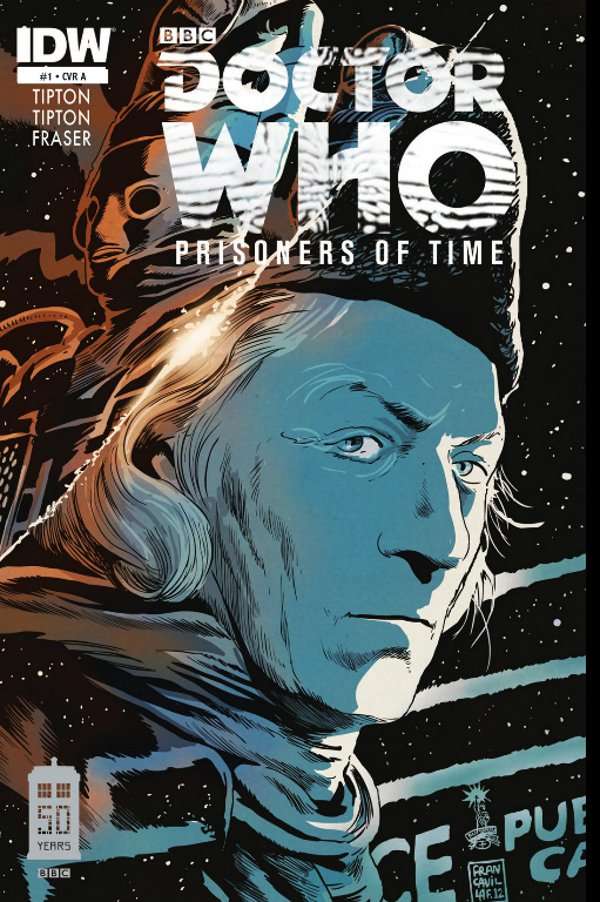
With Doctor Who's 50th anniversary this year, it's only natural that we'd see quite a bit of media looking back at the rich history of the world's longest-running science-fiction TV show. Enter Prisoners of Time - a 12-issue mini-series which - based on this first chapter - will show readers something of every one of The Doctor's eleven incarnations. It spoils little for me to say that this chapter is largely devoted toward The First Doctor and establishing the unifying trend between this and the upcoming chapters.

Prisoners of Time is a also a fine example of the twin problems a creative team faces with adapting an established series from one medium into a comic book For the writer, the problem lies in crafting a story appropriate to the series they are adapting. Doctor Who allows for more freedom than traditional science-fiction shows but it still has a certain bouquet that must be matched to feel authentic. For the artist, the problem lays in caricaturing the established characters so that they are recognizable without creating the appearance that they are tracing photographs.

Writers Scott & Paul Tipton meet the first challenge ably. Prisoners of Time feels exactly like the start of an extended Doctor Who story. We open with an unseen figure plotting against The Doctor, considering what is known about him regardless of incarnation and deciding the best way to deal with The Doctor is by separating him from his companions.
We then launch into a likely scenario for The First Doctor to engage in - taking a journey to introduce his companions to his old friend, the biologist and educator Thomas Huxley. We learn of Huxley's past in an information dump similar to the ones used during The First Doctor's tenure, when Doctor Who was still nominally an educational show for children. Thankfully, this section is rather brief and we are quickly swept up in an adventure involving the ant-like Zarbi from the classic First Doctor story The Web Planet.

Simon Fraser doesn't fair so well in meeting the challenges required of a Doctor Who artist. While he does a fair job caricaturing William Hartnell and the other Doctors in the close-up panels, he does a poor job of caricaturing the rest of the First Doctor's cast. Vicki in particular comes off looking badly misshapen. Some of the Doctor and Companion portraits we see at the start of the issue are incredibly vague and indistinct, with Adric only being identifiable by his star-badge. Thankfully, Fraser's visual storytelling is top-notch and the action from panel to panel flows well even if the actual figures appear warped.

Would I recommend this book? That depends upon your fondness for The First Doctor and your tolerance for dodgy artwork. I think the story was good and perfectly captured the spirit of the early Doctor Who episodes but the artwork is just too uneven for me to justify buying this book on a monthly basis. I'll probably pick-up the inevitable TP collection but at $4 a monthly issue for a regular-size comic, this series isn't quite good enough for me to justify the expense. I may change my tune when Issue #4 comes around (Tom Baker is my favorite!) but for now, I'll have to suggest giving this one a miss unless you're a die-hard Doctor Who collector or if your wallet is a bit fuller than mine.

No comments:
Post a Comment